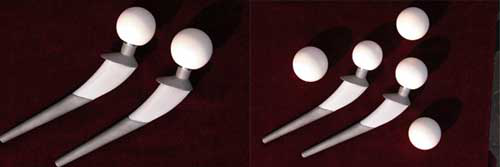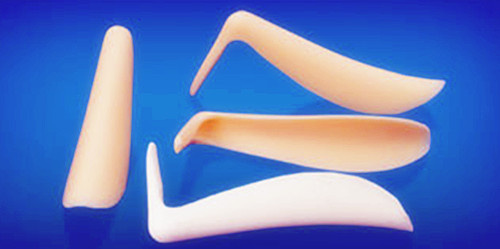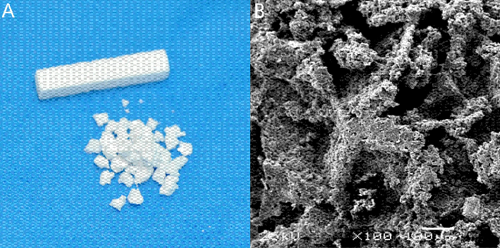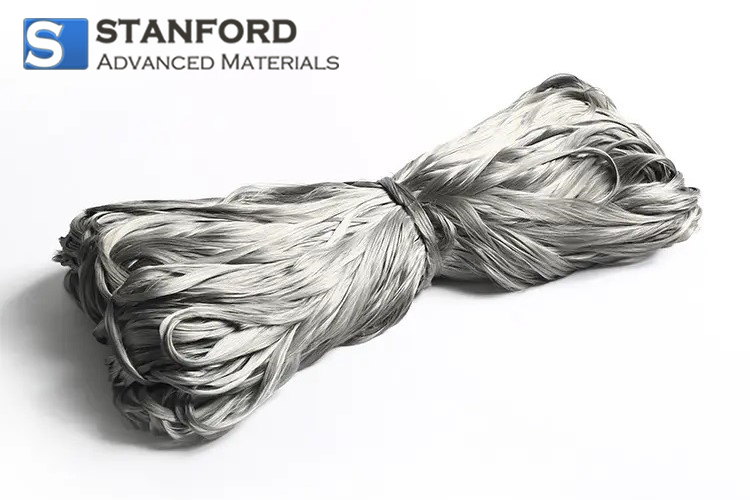Bioceramics Are Entering Our Bodies
Since the start of the 21st century, new materials have gradually been introduced into everyday life. Bioceramics, as a new material, has provided benefits to human life and health; consequently, it has received increasing attention in the fields of medical devices and biomedical materials.
Bioceramics are ceramic materials used for specific biological or physiological functions. They are used directly within the human body or in direct association with it, for example in biology, medicine and biochemistry. Owing to their good biocompatibility and stable physicochemical properties, they are frequently employed in orthopaedics, dentistry, plastic surgery, oral surgery, cardiovascular surgery and ophthalmic surgery.
Depending on the intended use, bioceramics can be divided into plant-based bioceramics and biotech bioceramics; and based on their in vivo activity, they can be classified as active bioceramics and inert bioceramics. In this communication, the bioceramics are categorised as follows.

Bioinert Ceramics
Bioinert ceramics possess stable chemical properties and good biocompatibility, for example, Aluminium Oxide and Zirconium Dioxide. Their physical, mechanical and functional properties correspond to those of human tissue. They exhibit high mechanical strength and high wear resistance.
Zirconium Dioxide (ZrO2)
Zirconium dioxide ceramic is the strongest material used for dental prostheses and is frequently used in orthopaedics for hip prostheses. Researchers have cultivated zirconium dioxide with osteoblasts in vitro and confirmed its biocompatibility. In orthopaedics, zirconium dioxide ceramics serve primarily in artificial hip joints. The adhesive strength of these ceramics is insufficient and affects connection stability. Consequently, acid etching and sandblasting are applied to improve adhesion. The brittleness of zirconium dioxide ceramic restricts its application; thus, a method to improve its toughness is typically employed.
Alumina (Al2O3)
The use of aluminium oxide ceramic in total hip arthroplasty (THA) began in the 1970s. Alumina ceramic, with a hardness exceeding 2 000 HV, shows minimal toxicity towards human fibroblasts in vitro, and its mechanical properties remain unchanged over an extended period. Hot isostatic pressing and laser etching reduce the grain size of third-generation alumina ceramics, increase both purity and density, enhance strength and hardness, and reduce the fragmentation rate. The high hardness and good wear resistance make alumina ceramic an important material in orthopaedic THA.

Silicon Carbide (SiC)
In recent years, researchers have attempted to use silicon carbide ceramics in oral medicine. As an implant material, silicon carbide ceramic has been preferred in scientific and clinical research. Studies have been conducted to evaluate its biocompatibility and toxicity. The ceramic surface has been coated with a bioglass layer, which further increases its biological activity.
Bioactive Ceramics
Bioactive ceramics, also known as bioresorbable ceramics, include bioactive surface ceramics and bioabsorbable ceramics. They typically contain hydroxyl groups and may be porous, thereby allowing biological tissue to grow and attach securely to the surface. Bioabsorbable ceramics are partially or completely absorbed and can induce the growth of new bone.
Hydroxyapatite Ceramic (HAP)
To improve the mechanical properties of hydroxyapatite, compact HAP has been enhanced. However, its apparent porosity remains relatively low. After implantation, bone formation occurs only on the surface. This surface bone does not stimulate substantial bone formation; it serves solely as a scaffold.

Consequently, research focuses on porous hydroxyapatite ceramics. Researchers have determined that porous calcium phosphate implants mimic the structure of the bone matrix and exhibit osteoinductive properties. They provide a scaffold and channel for new bone tissue growth. The tissue response after implantation was considerably better than that of dense ceramics.
Bioglass Ceramic
The main components of bioglass ceramic are CaO-Na2O-SiO2-P2O5. This composition contains more calcium and phosphorus than ordinary window glass and can form a natural, firm chemical bond with bone. The material undergoes a series of surface reactions at the implant site, eventually forming a carbonate-based apatite layer. Its biocompatibility is proven; the material is implanted without rejection, inflammation or tissue necrosis and forms a bone bond.
Currently, this material is used for the repair of small ossicles and has achieved positive results in restoring hearing. Given its low mechanical strength, it is used only at sites where the force is low. Material produced by the sol-gel method exhibits good purity, high homogeneity, high biological activity and a large specific surface area, thereby increasing both research and application value. In particular, the bioactive porous glass material shows promising potential for use as a scaffold for bone tissue.
Calcium Sulphate
Medical calcium sulphate, in the form of a hemihydrate crystal, after complete degradation, does not affect the serum calcium level. When combined with water, it forms a solid implant and can act as a carrier for water-soluble antibiotics. Calcium sulphate sets at low temperature and does not damage adjacent nerve tissue. It can induce bone formation and release calcium ions. In a mildly acidic environment, high local calcium ion concentrations bind to calcium-sensitive receptors on osteoblasts, thereby promoting the proliferation and differentiation of bone cells and regulating osteoid formation. The osteogenic capacity of pure calcium sulphate cements is limited; only in the presence of the periosteum do they exhibit some osteogenic properties.
Hotspots in Bioceramics
Composite Material
Many materials scientists have researched composite materials to improve the mechanical properties, stability and biocompatibility of bioceramics. Common matrix materials include biological polymers, carbon materials, bioglass, and calcium phosphate bioceramics. Reinforcement materials include carbon fibres, fibres manufactured from stainless steel or cobalt alloys, bioglass ceramic fibres and ceramic fibres. In addition, particle reinforcements such as zirconium dioxide, calcium phosphate bioceramic and bioglass ceramic are used.

Nanotechnology
Nanometre-sized materials exhibit specific properties such as the surface effect, size effect and quantum effect. Nanometre-level bioceramic materials have broad application prospects. They have performed well in the manufacture and clinical use of hard tissue replacement materials such as artificial bones, artificial joints and artificial teeth. In bioactive ceramics, current research focuses on simulating a fine natural bone structure. In natural bone, hydroxyapatite consists mainly of needle-like crystals measuring 10–60 nm in length and 2–6 nm in width. Consequently, research on HAP nanomaterials centres on nano-HAP crystals, nano-HAP/polymer composites and nano-HAP coatings.

 Bars
Bars
 Beads & Spheres
Beads & Spheres
 Bolts & Nuts
Bolts & Nuts
 Crucibles
Crucibles
 Discs
Discs
 Fibers & Fabrics
Fibers & Fabrics
 Films
Films
 Flake
Flake
 Foams
Foams
 Foil
Foil
 Granules
Granules
 Honeycombs
Honeycombs
 Ink
Ink
 Laminate
Laminate
 Lumps
Lumps
 Meshes
Meshes
 Metallised Film
Metallised Film
 Plate
Plate
 Powders
Powders
 Rod
Rod
 Sheets
Sheets
 Single Crystals
Single Crystals
 Sputtering Target
Sputtering Target
 Tubes
Tubes
 Washer
Washer
 Wires
Wires
 Converters & Calculators
Converters & Calculators
 Write for Us
Write for Us


 Chin Trento
Chin Trento



